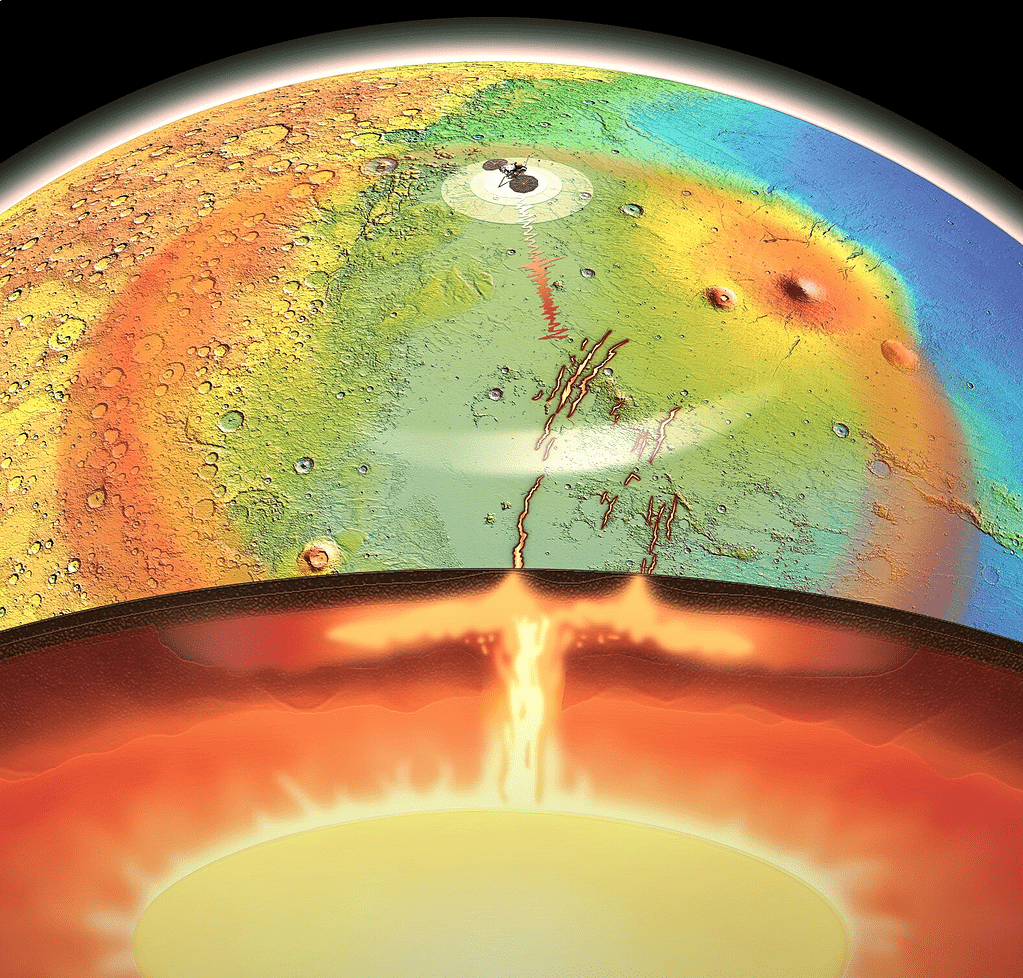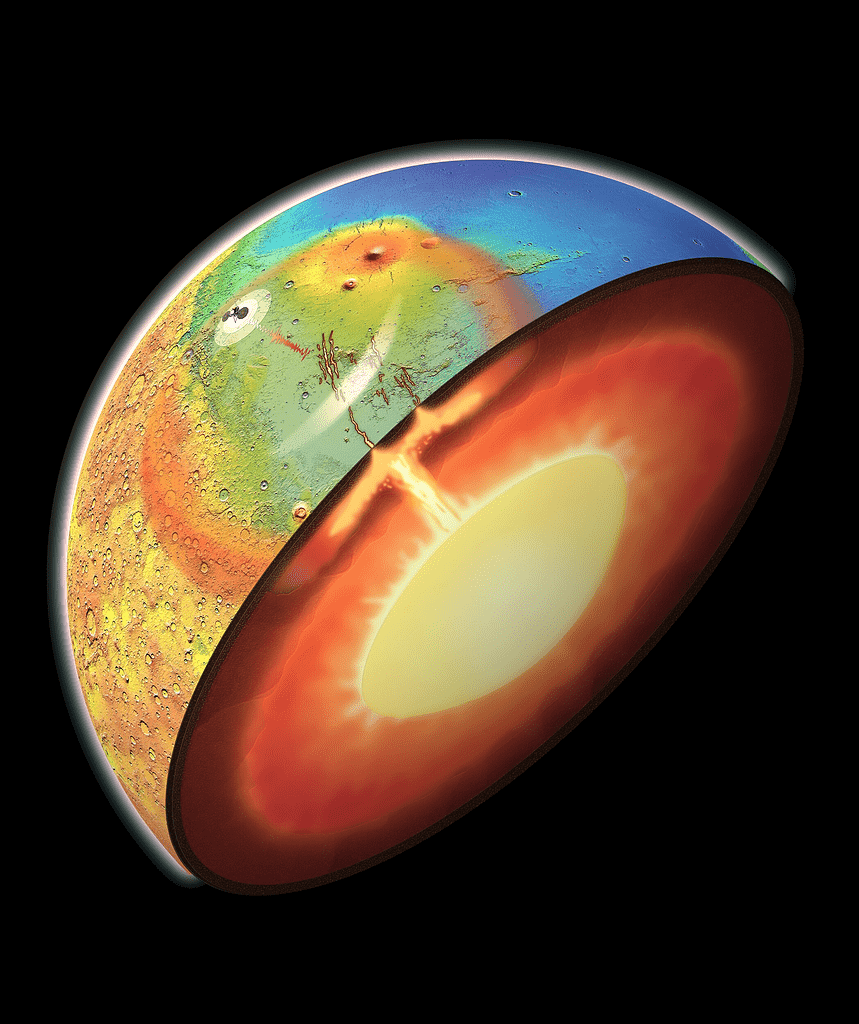For all its Earth-like characteristics, Mars is surprisingly barren: it doesn’t have a thick atmosphere, it doesn’t have any seas or rivers, and it doesn’t even have active geology. It’s barren, inactive, and boring. Or is it?
Mars is definitely not the lush, thriving environment the Earth is, and it’s not nearly as friendly to water (or with life) as our planet. But it might not be the boring place we think it to be. Although the geological activity on the Red Planet has largely quieted down, it may not be completely silent, a new study shows. In fact, Mars could have an active mantle plume with a diameter of about 4,000 km.

As the closest planet to the Earth, Mars has been the subject of human exploration from centuries. It’s been studied extensively through remote sensing techniques, as well as a series of robotic missions that were sent to the surface of Mars. The surface geology of Mars is interesting enough. It’s characterized by massive volcanic swaths covered by the famous red-colored dust called regolith, which covers much of the planet’s surface. There are also a lot of craters, as Mars’ thin atmosphere isn’t strong enough to protect it from meteorites.
But look a bit closer at Mars, and you’ll see more interesting things.
There are a number of valley networks on Mars, as well as several geological features thought to be carved by water. While Mars may not have liquid water now (or not much), it seems to have had a lot of it in the past. Similarly, Mars appears to have no real tectonic activity now, but it may have been much more active in the past.
At least, this is what researchers thought until they sent a seismometer to Mars.
NASA’s InSight lander detected low but constant seismic activity, as well as a couple of significant earthquakes — I mean marsquakes. Now, researchers Adrien Broquet and Jeffrey Andrews-Hanna believe they’ve traced that activity to a recently formed system of fissures called Cerberus Fossae. They found that a 4,000-km-diameter active mantle plume head would best explain the observations.
“Plume activity provides an explanation for the regional gravity and topography highs, recent volcanism, transition from compressional to extensional tectonics and ongoing seismicity,” the researchers write in the study.
“We know that Mars does not have plate tectonics, so we investigated whether the activity we see in the Cerberus Fossae region could be the result of a mantle plume,” Broquet said.

The inferred plume head characteristics are comparable to terrestrial plumes that are linked to the formation of large igneous provinces on Earth. Cerberus Fossae is also the location of Mars’ most recent volcanic episode some 53,000 years ago.
“In terms of what you expect to see with an active mantle plume, Elysium Planitia is checking all the right boxes,” Broquet said, adding that the finding poses a challenge for models used by planetary scientists to study the thermal evolution of planets. “This mantle plume has affected an area of Mars roughly equivalent to that of the continental United States. Future studies will have to find a way to account for a very large mantle plume that wasn’t expected to be there.
“We used to think that InSight landed in one of the most geologically boring regions on Mars—a nice flat surface that should be roughly representative of the planet’s lowlands,” Broquet added. “Instead, our study demonstrates that InSight landed right on top of an active plume head.”
Mantle plumes are regions of the mantle that are hotter than the surrounding environment, which makes them more buoyant. Think of them as analogous to hot blobs rising in lava lamps. These plumes erupt as flood basalts and create vast volcanic plains, as we also see on Earth, for instance around the Caribbean.
“Previous work by our group found evidence in Elysium Planitia for the youngest volcanic eruption known on Mars,” Andrews-Hanna said. “It created a small explosion of volcanic ash around 53,000 years ago, which in geologic time is essentially yesterday.”
This would make Mars the third body in the solar system with active tectonics, after Venus and the Earth — which makes the planet all the more interesting.
“Our results demonstrate that the interior of Mars is geodynamically active today, and imply that volcanism has been driven by mantle plumes from the formation of the Hesperian volcanic provinces and Tharsis in the past to Elysium Planitia today,” the authors of the study conclude.
The study was published in Nature.


